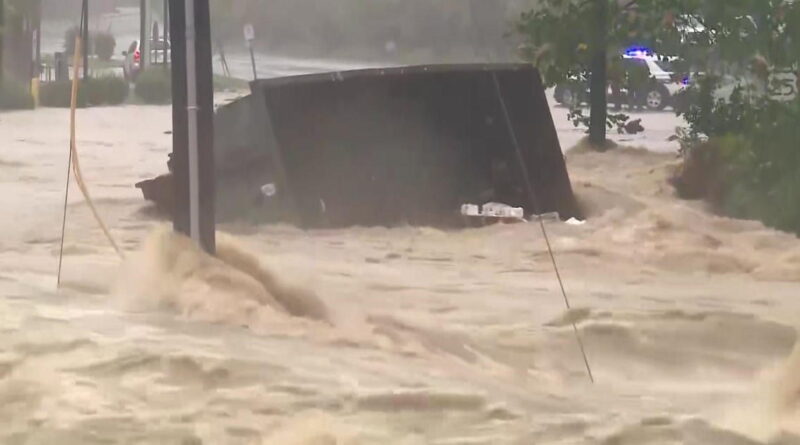Most U.S. homeowners hit by Hurricane Helene don’t have flood insurance
Homeowners whose properties were swamped by Hurricane Helene’s torrential rainfall face a serious problem beyond drying out: how to pay for the cleanup.
That’s because most Americans, including in the communities ravaged by the massive storm, lack flood insurance.
As the aftermath of the hurricane’s ruinous and deadly route across the Southeast illustrates, the alarming lack of flood insurance coverage among an overwhelming majority of people impacted serves as a cautionary tale for the rest of us, experts say.
Along Florida’s barrier islands that run from St. Petersburg to Clearwater, mansions, single-family homes, apartments, mobile homes, restaurants, bars and shops were completely destroyed or heavily damaged by the storm in minutes. In hard-hit Pinellas and Taylor counties, victims with storm coverage ranged from 25% to 5%, respectively, according to the Insurance Information Institute.
Outside of the Sunshine State, the picture is even more dire, with just 1% of homeowners who sustained flooding from Helene holding flood insurance, the institute said.
One underlying factor is that flooding is not covered by a homeowner’s policy and must be purchased separately, often from the federal government. Flood insurance is required on government-backed mortgages for homes in areas classified as high risk by the Federal Emergency Management Agency. Many banks mandate flood insurance in high-risk zones as well, but that doesn’t prevent some homeowners from dropping their coverage once their mortgage is paid off.
Calculations on how many homeowners are at risk and how many are covered vary, but all are disconcerting.
FEMA estimates only 4% of homeowners across the country have flood insurance, even though 99% of U.S. counties have been impacted by flooding since 1996. The Insurance Information Institute offers a slightly higher count, stating that about 6% of U.S. homeowners have flood insurance, with most, or 67%, covered through the National Flood Insurance Program run by FEMA, and 33% via a private insurer.
People have “a false sense of security”
When buying or renting a place to live, most people’s main consideration in deciding whether or not to buy insurance for flooding is whether the property is in a high-risk zone. But that creates a “false sense of security,” according to Georgina Sanchez, a faculty fellow and research scholar at the Center for Geospatial Analytics at North Carolina State University. “This perception can discourage residents from flood insurance,” as occurred in western and northern North Carolina, Sanchez told CBS MoneyWatch.
Sanchez’s center has coordinated its research with the Brooklyn-based nonprofit First Street, which compiled a flood database that allows people to look up individual locations nationwide to access the present and future risk of property flooding in those areas.
“Many of our homes, businesses and infrastructure are situated within 800 feet, or roughly two city blocks, from the edge of the 100-year floodplain,” areas viewed as susceptible to being inundated by floodwaters and used to set insurance rates, said Sanchez.
A recent nationwide study found 24% of locations where people are building to be located in that buffer zone, or immediately outside the 100-year flood zone. “We all love to live near water,” she said. “But we’re at a point where we have to ask, do we want to keep putting people in harm’s way.”




